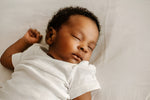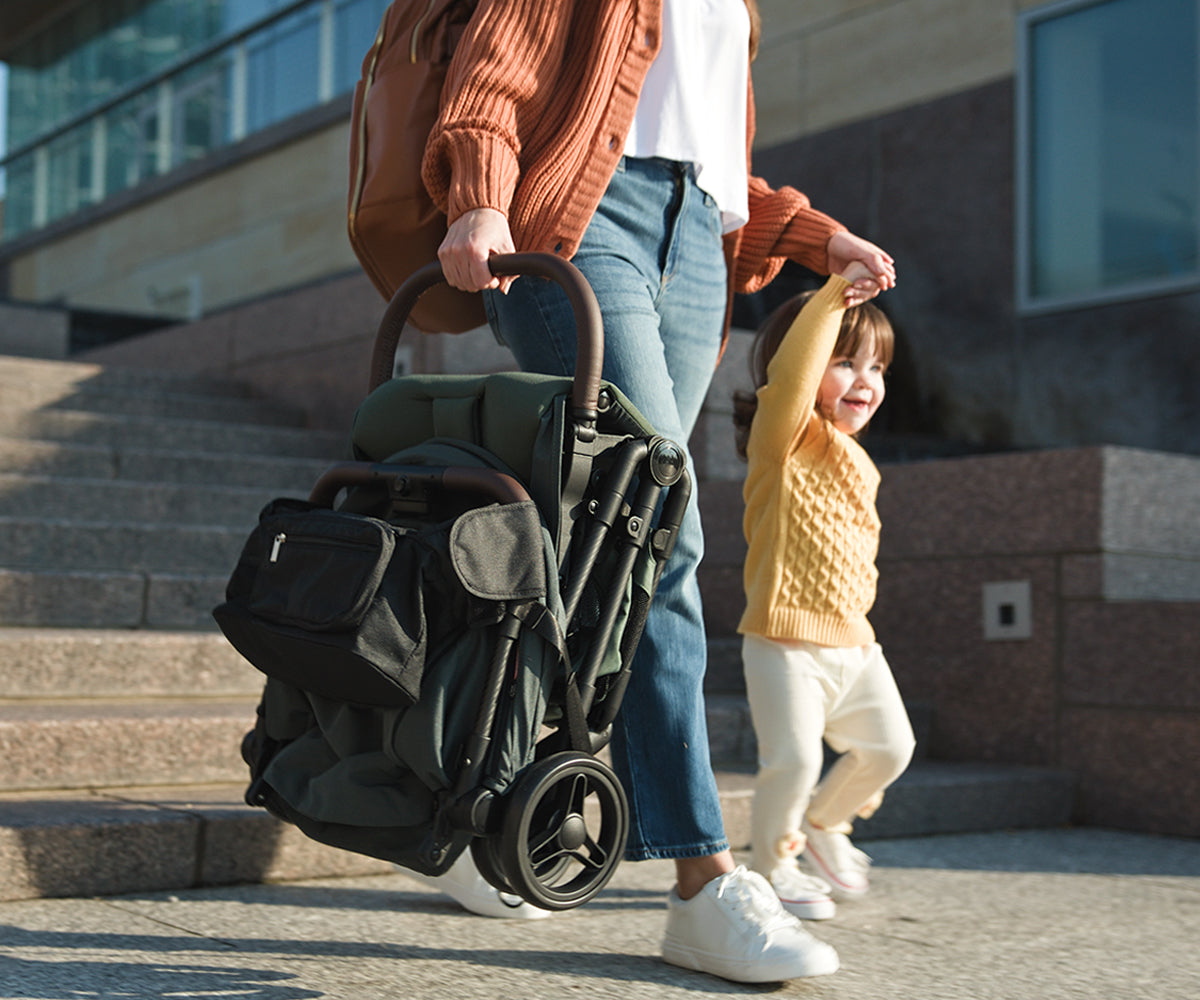
Do Rocking Chairs Really Help Babies Sleep? A Science-Based Look
, by Artorias Tse, 9 min reading time

, by Artorias Tse, 9 min reading time
Parents/caregivers have relied on rocking and nursery chairs for generations to put babies to sleep.
The gentle back-and-forth motion is somewhat similar to the comforting movement in the womb, at least for infants. Can these chairs help babies sleep, or is it just another old wives’ tale?
Nonetheless, traditional nurseries and rocking chairs managed to hold their popularity in baby nurseries. Some parents mistakenly search for nursering chairs, thinking it’s simply a distinct type. And this article digs up the science behind rocking chairs and whether they genuinely contribute to better baby sleep.
Rocking chairs have been holding a significant role in childcare traditions across different cultures. The widespread use is an outcome of centuries of evolution in furniture design and childcare practices.
The first rocking chairs appeared in the early 18th Century in North America. They were initially simple wooden chairs with curved rockers. The early designs were primarily used for outdoor relaxation.
Rocking chairs became a common nursery feature. Child-centered home designs increased with a focus on care and comfort. Moms relied on rocking chairs for soothing, feeding, and putting to sleep.
Rocking chairs became affordable and accessible due to industrialization. They entered middle-class homes alongside baby nurseries. Many hospitals and maternity wards also introduced the chairs.
Rocking chairs have evolved into glider chairs for a smoother back-and-forth motion. Some high-tech features include built-in features like vibration settings, music, and automatic rocking mechanisms.
Enhanced Sleep Quality – The repetitive, gentle, rhythmic rocking motion facilitates faster sleeping with improved sleep quality. Researchers at the University of Geneva demonstrated a speedy sleep onset, prolonged deep sleep phases, and fewer awakenings.
Pain Reduction and Rehabilitation – Rocking is associated with pain relief and accelerated recovery in postoperative patients. Dr. Janet Travell prescribed rocking chairs to President John F. Kennedy (in 1955) to alleviate his chronic back pain.
Emotional and Psychological Well-Being – Rocking chair use can improve emotional health among elderly people with dementia. Research at the University of Rochester revealed that nursing home residents with dementia exhibited reductions in anxiety and depression.
Improved Balance and Mobility – Regular rocking chair use can enhance balance and mobility. A study found significant improvements in balance, knee extension strength, and walking speed over rocking chair exercises.
The vestibular system in the inner ear maintains balance and detects motion. When a baby is rocked, this system is gently stimulated to provide stability and security. A study published in ‘Current Biology (2019)’ demonstrated enhanced sleep quality by regulating natural circadian rhythms.
SWS is known to be the deepest and most restorative sleep phase. Studies show that rocking motion increases SWS and improves sleep duration and quality. An experiment published in ‘Science Advances (2021)’ revealed that rocking helps regulate sleep spindles (short bursts to consolidate memory).
Babies may struggle to fall asleep and eventually experience elevated levels of hormones from stress. The rhythmic rocking motion of the chair lowers the hormone while increasing oxytocin for bonding and relaxation. This hormonal shift helps a baby to transition from a state of alertness to deeper sleep.

Mimicking the Womb Experience
Every baby experiences constant motion inside the womb. The swaying movements they felt created a sense of comfort and security. Rocking a baby in a chair recreates this sensation, making them feel safe.
Strengthening the Parent-Child Bond
Rocking provides an intimate skin-to-skin contact moment between the parent and the baby. It fosters emotional attachment while reducing stress. An American Academy of Pediatrics (AAP) study found that regular rocking improves emotional security in infants and initiates better sleep patterns.
Teaching Babies Self-Soothing
Babies who are regularly rocked learn to associate motion with relaxation. Over time, this leads to independent sleep habits, reducing nighttime awakenings and dependency on external comfort.
| Sleeping Method | Effectiveness in Inducing Sleep | Capability of Keeping Asleep Longer | Reduction of Infant Stress | Habit of Independent Sleeping |
|---|---|---|---|---|
| Rocking Chair | High | High | High | High |
| White Noise | Medium | Medium | High | Moderate |
| Swaddling | Medium | Medium | Medium | Low |
| Co-Sleeping | Medium | High | High | Low |
Rocking chairs outperform every common method in terms of induction, duration, and relaxation. Co-sleeping literally skyrockets dependency on parental presence. Rocking also promotes self-soothing in the long run, which is required for healthy sleep habits.
Rocking Chair Pros
Rocking Chair Cons
Nursery Chairs Pros
Nursery Chair Cons
A rocking chair provides classic back-and-forth rocking motion. However, the abrupt movement can become disruptive upon poor execution.
Meanwhile, nursery chair (gliders and armchairs) initiate smooth horizontal motion. It’s also quieter and requires minimal effort than rocking.
For nursery chairs, gliding ones require less space over a limited track. Stationary nursery chairs take up the least space, being ideal for small nurseries.
Rocking chairs need additional space due to the movement in an arc. Too close placement to a wall can make it difficult to use the motion effectively.
A rocking chair becomes hazardous when a baby crawls near the moving parts. Excessively forced rocking may lead to tipping risks.
Nursery chairs are safer options as they move in a controlled track. Stationary ones are the safest option because they don’t move at all.
Nursery chairs mostly have plush cushions, padded armrests, and reclining features. Stationary one may feature extended sitting sessions and potential lumbar support.
Meanwhile, classic rocking chairs are made of wood that require added cushions for comfort. However, some modern and high-end designs may include built-in padding.
Parents can use a rocking chair beyond the baby’s infancy for reading, relaxation, and elderly use.
Nursery chairs are primarily used only in nurseries that may not fit into regular home décor/space.

There are distinctive rocking chairs, such as traditional, upholstered, and even glider rocking chairs. Know the specific characteristics, application scenarios, advantages, and limitations to match your demands.
The seat should be wide enough (18” – 22”) for comfortable sitting. Look for padded armrests along with lumbar support. Consider a high backrest (over 24”) to rest your head.
Always check the base structure with or without an anti-tipping-over mechanism. Non-slip pads can restrict the chair from sliding. For safety concerns, a glider rocker is better than a traditional one.
Wooden rockers are classic, sturdy, and long-lasting. Upholstered ones are soft and padded for extra comfort. Metal frames are durable and lightweight without much aesthetic appeal.
A swivel base allows the chair to rotate 360 degrees for extra mobility. Some rocking chairs offer a reclining mechanism for relaxation. Included side pockets can keep some baby care essentials.
Traditional rocking chairs require more space due to the arc-shaped movement. Gliders and compact rockers feel like superior options for small nurseries as they take up less space.
Try to read the customer reviews and check ratings on sites like – Amazon, Wayfair, IKEA, Pottery Barn Kids, Buy Buy Baby, and others. Look for feedback on durability, comfort, and maintenance.
Do rocking chairs really help babies sleep better?
Answer: Research suggests that rhythmic motion aids relaxation and improves sleep quality.
What is the difference between a nursery chair and a nursering chair?
Answer: Both are the same with no difference; nursering is a common misspelling of nursery.
How to choose the safest rocking chair for a baby?
Answer: Narrow the choices to a stable base, non-toxic materials, and ergonomic support.
Rocking chairs can enhance a baby’s sleep, but they should be part of a well-balanced sleep routine to encourage independent sleep habits. Parents must experiment with different methods to find what works best.
Have you been using a rocking chair to help your little one sleep? Share your experience along with the guide for others. Parents struggling with poor baby sleep can get some insights and settle on the best chair to relieve the stress.

YOUR FIRST ORDER